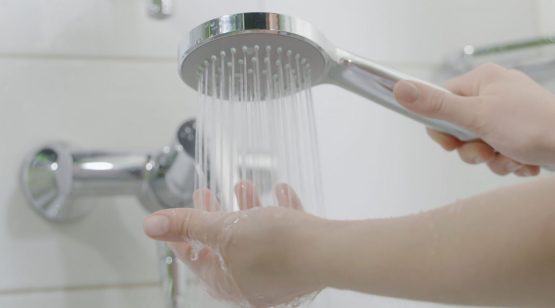Summer heat and water shortages - tips & tricks for saving water
We have been living with very high temperatures and little precipitation for weeks. Hydroelectric power plants are producing much less power, agriculture is groaning under the drought and municipalities across Europe are calling for water conservation. Are we running out of drinking water? And what can each individual household do to treat our greatest natural resource with care? Here are tips and tricks for everyone to save water simply and effectively.
First of all: you should never skimp on drinking - Austria has the privilege of having clean drinking water from every tap and especially when it's really hot, the need for fluids quickly rises to over two liters per day.
There is potential for optimization in these areas in particular:
Optimize garden irrigation
In times of extreme heat with little rainfall, garden owners should reduce the watering of their lawns.
Maintaining private pools
For private pools, always pay attention to intensive care and cleaning in order to prevent algae formation as much as possible when the water temperature rises. And thus avoid having to change the water.
Give preference to energy-saving household appliances
Using energy-saving, state-of-the-art appliances is always a good idea. This means that less energy and fewer resources are required.
Full load for washing machine and co.
Always load the washing machine and dishwasher fully and thus use the full capacity of the appliances. This not only saves water, but also energy.
Do not let the water run unnecessarily
Especially when brushing your teeth or showering, the tap does not have to be left on all the time. Only let the water run during personal hygiene when it is really needed. When flushing the toilet, an automatic water stop is a small but efficient way to avoid wasting water unnecessarily.
Water-saving systems for showers
When showering, attention should be paid to water consumption. As pleasant as a cool shower is, one shower can quickly consume up to 80 liters of water1. For a family of four that wants to shower every day, this adds up to over 2,000 liters of water per week just for showering. Conventional low-flow shower heads reduce the water pressure and therefore also the showering comfort. But there is a new technology that reduces water consumption without you even noticing it while showering:
Environmental technology specialist Rabmer offers the solution with its water-saving innovation ECOTURBINO. "The ECOTURBINO is a small turbine that can be quickly and easily installed in any shower fitting and uses patented technology to generate a highly turbulent water-air mixture. This saves around 36% water and energy without reducing the intensity of the shower jet. As an exclusive sales partner, we thus offer an innovative solution to counteract the ever-increasing scarcity of water," explains Ulrike Rabmer-Koller, Managing Partner of the Rabmer Group.
New online store
Rabmer's innovative environmental technology products are now also available online at www.rabmer.at/shop. Anyone can now easily order the ECOTURBINO water-saving system for the shower online, either as a single product or in the popular set variants (hand shower set or overhead shower set). Furthermore, the shower can be equipped with the AQUABION Mini limescale protection for showers in calcareous regions. The effective ZYPHO heat exchanger for the shower is also available from the online store - by recovering heat energy from shower waste water, energy consumption can be reduced by around 30%.
The Rabmer webshop therefore offers products that can not only effectively reduce household costs, but also make a significant contribution to climate and environmental protection. The ECOTURBINO water-saving system in particular is already helping to save around a third of the water used in many showers.
1) Source: Ministry of Life, Nov. 2010, Study on water consumption and water demand, Part 1, p. 114, Tab. 26 and p. 115, Tab. 28
